SEO, or Search Engine Optimization, has its own unique set of terminology, definitions and abbreviations, just like any other industry. Stay on top of why your website is or is not ranking by learning the basics of SEO.
Use this glossary of common terms to improve your SEO knowledge.
SEO Glossary of Terms A-Z
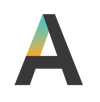
Algorithm - a complex computing system that is used to retrieve data from hundreds of billions of web pages to deliver the best possible results to web users. While search engines such as Google will share some information about their algorithms, the specifics are kept secret. An effective SEO strategy involves updating your site to align with algorithm changes as they happen -- which is often. In fact, Google updates its algorithm 500 times a year.
Anchor Text - the text used to link pages, such as this right here linking to our SEO services page. Anchor text links help search engine bots understand the context of an article and its relevance to other articles on the web. Anchor text should provide value to the user and not be stuffed with keywords.

Backlink - also known as an inbound link, is a link from another website to your website. Backlinks are a form of off-page SEO and can boost a site’s ranking when coming from high authority sites.
Black Hat - unethical SEO practices used in an attempt to trick search engine bots and get a site to rank higher.
Bot - also referred to as spiders, crawlers and robots, this is the technology that crawls a website to ‘read’ or understand the information on its pages and index the site accordingly.
Bounce rate - this is the rate at which web users bounce off a web page. A high bounce rate is a signal that users don’t find the page or site worthy, and can negatively affect search ranking.
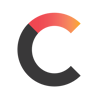
CTR or Click-Through Rate - the rate at which users click within a website or on a web ad. A high CTR signals that users are engaged in this information and can positively affect search ranking.
Crawling - this is what the bots, spiders or crawlers do in order to ‘read’ a website. A site must first be crawled in order for pages to be indexed and ranked.

Directory - an online list of businesses within a particular niche, location or category that creates a backlink to a website. It’s a form of off-page SEO. Online business directories are a great way for local businesses to get found, such as when someone is searching ‘nearby restaurants’ or ‘insurance companies in my area.’ One of the largest free directories (that every business really should take advantage of!) is Google My Business.
Domain Authority or DA - a numerical score that predicts a website’s ranking on the search engine results page. The higher the score, the better.

External Link, also known as an outbound link, is a hyperlink from another website linking to your website. Or in reverse, your website linking off-site to another website. Trustworthy and informative external links from high-quality websites (whether pointing to or away from your website) can improve SEO, whereas poor-quality, keyword-stuffed or spammy links can hurt SEO.

Featured Snippet - a concise and direct answer to a user’s search query, displayed on the search engine results page without having to click through to a website. The information is shown below ads, but immediately before the first organic result. Featured snippets are often referred to as position 0. There are several kinds of featured snippets, such as text snippets, video snippets, lists and tables. When it comes to SEO, featured snippets can lower clicks to a website but can increase brand awareness and topic authority. Ultimately, you want a mix of both featured snippets and clicks to your site.
Example Featured Snippet:
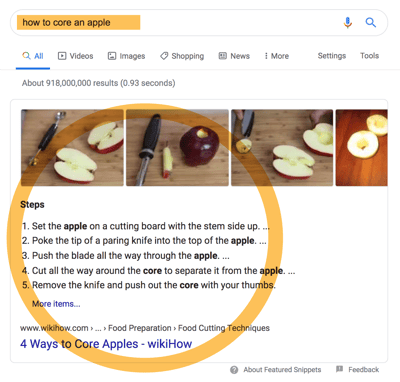

Google - the world’s most popular search engine with a market share of over 90%. Staying on top of Google’s daily algorithm changes and using its plethora of tools is key to maintaining SEO across any site. Some of the Google tools and services that support SEO are Google Keyword Planner, Google Analytics, Google Maps, Google Mobile-Friendly Test, Google My Business, Google PageSpeed Insights, Google Search Console, Google Trends, Google Webmaster Tools, YouTube and more.

Headers/Header Tags - HTML tags used to identify headings and subheadings within the content of each web page. The hierarchy goes from H1-H6, with the most important header being the H1. Header tags should be unique, optimized with keywords and each page should only have one H1, while pages could have multiple H2, 3s, etc. Header tags are a key on-page SEO element that helps search engines understand each page of your website. Headers also help organize page content, providing a better user experience.
Example Header Tags
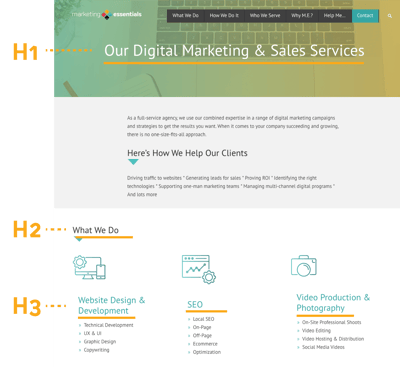
HTTPS vs HTTP - HTTPS uses an SSL (Secure Socket Layer) to encrypt and protect website information, making the site secure. An HTTP site does not have this layer of security. Google has been pushing all sites to go to HTTPS, and in October 2019, announced that non-HTTPS websites will see ‘Not Secure’ website notification pop-ups, which obviously would be a turn-off to any web user.

Indexing - the process of storing website information on the world wide web. If your site is not indexed, it will not show up in search at all - nowhere. For optimal indexing, sites should be submitted via Google Search Console and regular monitoring be conducted to remove any no-index tags or crawl bots that prevent indexing.
Internal Link - also known as an inbound link, is a hyperlink between pages on your own website. Internal links help bots understand your website holistically and keep users engaged on the site. The anchor text — the text used in the hyperlink — should help users navigate the site and also help search engine bots better crawl and understand the website, which improves overall SEO.

JSON-LD or JavaScript Object Notation for Linked Data - a widely accepted schema (learn more under S) markup due to its ease of implementation. It helps search engines understand the context, such as what price goes with what product, for featured snippets, knowledge graphs, etc.

Keyword Research - uncovering the words people are using in search queries and then optimizing your website accordingly to help your target audience find your website. Finding the correct keywords for your website can be a tricky and complex process that keeps evolving with algorithm changes. Good keyword research should include a variety of metrics, such as search volume, competition level, competitor keywords, LSI and long-tail keywords (learn more below), the user intent behind those keywords and more.
Knowledge Graph - not the same as a featured snippet, though often grouped together due to its instant answer, the knowledge graph appears on the right side of the search engine results page and gives instant answers in the form of a knowledge panel or rich card. It’s a card of information to better serve immediate answers. Knowledge graphs are great for brand awareness and can entice new website traffic as users often find key business information, such as an address, reviews, hours, etc. Through SEO tools such as Google+ and Google My Business, you can influence what shows up in a knowledge graph.
Knowledge Graph Example
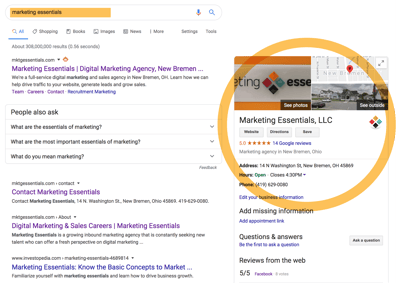

LSI or Latent Semantic Indexing - keywords semantically related to each other and commonly found together within a single topic. LSI keywords help search engines understand website content. Your website should be optimized with LSI keywords in mind.
Link Building - an SEO strategy of building external links between websites. The higher quality your links, the higher your site can rank. There are many techniques (some good practice and some bad practice) for building links, and SEO experts tend to agree that link building is one of the hardest parts of their jobs.
Link Juice - an SEO term for the search equity passed from one webpage or website to another page of the site via links.
Long-Tail Keyword - keyword phrases, typically three or four words, that are a key part of keyword research and help narrow a target example. For instance, a keyword would be ‘dog,’ while long-tail keywords would be ‘non-shedding small dog.’

Meta Description - the text that displays in the search engine results page to describe the web page content. The purpose of a meta description is to reflect the essence of a page and to entice click-through to the site. Meta descriptions are not a ranking factor. However, the click-through rate is. Therefore, metas indirectly support SEO. Implement metas that are unique, hit your target audience pain points and follow best practices for character counts.
Example Meta Description


Nofollow Attribute - a meta tag that tells search engines not to follow one specific outbound link. This is done in cases when a website doesn’t want to pass authority to another webpage or because it’s a paid link.
Noindex Tag - a meta tag that tells search engines not to index a specific webpage in its index. These can be used for web pages that you do not want to be indexed. Just be sure the tag is only placed on those pages.
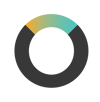
Online SEO - Online SEO is any action that you take that contributes to the search rankings of your own website directly. Posting a new piece of content, optimizing headers on specific pages and adding keywords into title tags are all examples of online SEO in action.
Offline SEO - As the name suggests, offline SEO doesn't take place on your website and actually may not even take place on the Internet at all. Offline SEO (also referred to as offsite SEO) is defined as any tactic you conduct outside of your website to drive traffic back to your site.
Organic Search - search results that appear based on relevance to the search terms - excluding paid advertisements.
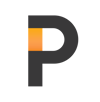
Page Rank - this is the ranking of a web page based on its importance in relation to what was searched. Named after Larry Page, one of the founders of Google, ranking in Position 1 is the dream. Ranking 1-10 typically puts the web page on the first page of Google search, which is also ideal.
Penalty - this is a violation of SEO best practices and will negatively affect a site’s ranking.
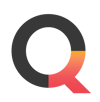
Quality Content - creating quality content on your website supports SEO, as users are more likely to engage with that content. For example, creating a blog that provides SEO terms, such as this one, is an informative article that search engines may serve up when a user searches for SEO information. Also, Google’s major algorithm changes, such as the recent BERT update, are often put in place to help ensure users are receiving quality content vs. spammy or sales-pitchy content.
Query - words, phrases, questions, etc., that users enter into the search box.

Redirect - the process of sending users and search engines to a different URL via a redirect. There are different types of redirects, such as a 301 or 302. Redirects are key to SEO to avoid a 404 error, which means the page doesn’t exist. Any links pointing to a 404 can negatively impact SEO.

Schema Markup - a standardized markup of specific page content to improve the way that content is displayed on the search engine results page. Schema markup is often used for featured snippets and knowledge graphs. It helps ensure key business information - such as location, hours and reviews - immediately appear for searchers.
Search Engine - Google is the No. 1 search engine in the world, but there are others you can use such as Bing, Yahoo and Yandex (keep reading…).
SERP or Search Engine Results Page - the pages of results that are displayed when you search. Being on Page 1 of the SERP is ideal.
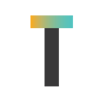
Time on Page - the amount of time a user spends on a web page before navigating anywhere else. Time on page can influence SEO, as the search bots use this as a factor in determining if the site contains content users want.
Title Tag - this appears as a clickable headline in the SERP. Well-written and optimized title tags can improve a site’s ranking. Title tags should be unique across the site - including keywords and brand name - and be 50-60 characters in length.
Example Title Tag


URL - or Uniform Resource Locator, is your web address. Keywords in a URL help support SEO efforts by improving search visibility.
UX or User Experience - the overall experience a user has on a website. Good UX results in users spending more time on your website, which can help a site’s rank.

Voice Search - also called voice-enabled. This is when users search via voice command. Optimizing for voice search has been extremely important due to the growth of voice-enabled apps and home devices, such as an Amazon Echo or Google Assistant.

Website Navigation - this is the website menu at the top of a page or right-hand corner for mobile devices that shows the pages of the site. Good website navigation, also known as site architecture, makes it easy for your users to find what they want and for search engines to crawl a site. Your navigation is key to greater search visibility.
White Hat - good SEO practices that comply with Google’s Webmaster Guidelines.

XML or Extensible Markup Language - markup language search engines use to understand website data.

Yandex - the most popular search engine in Russia, founded in 1997. May not be relevant to your website, but there are not many SEO terms that begin with Y.
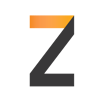
Zebra - a species of African equids united by their distinctive black-and-white striped coats that has nothing to do with SEO but does begin with the letter Z.
Well, there you go, A-Z, now you know your SEOs! Learn even more about SEO with our free guide, SEO Myths Debunked in 2020.




